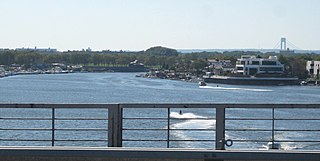
Rhode Island, officially the State of Rhode Island and Providence Plantations, is a state in the New England region of the United States. It is the smallest state in area, the seventh least populous, the second most densely populated, and it has the longest official name of any state. Rhode Island is bordered by Connecticut to the west, Massachusetts to the north and east, and the Atlantic Ocean to the south via Rhode Island Sound and Block Island Sound. It also shares a small maritime border with New York. Providence is the state capital and most populous city in Rhode Island.
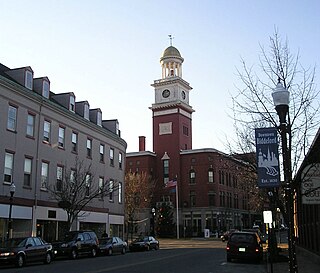
Biddeford is a city in York County, Maine, United States. It is the principal commercial center of York County. The population was 21,277 at the 2010 census. Twin city of Saco, Biddeford includes the resort community of Biddeford Pool, Fortunes Rocks and Granite Point. The town is the site of the University of New England and the annual La Kermesse Franco-Americaine Festival. First visited by Europeans in 1616, it is the site of one of the earliest European settlements in the United States.
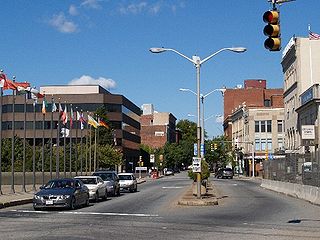
Fall River is a city in Bristol County, Massachusetts, United States. The City of Fall River is located approximately 53 miles (85 km) south of Boston, 17 miles (27 km) southeast of Providence, Rhode Island, 20 miles (32 km) south of Taunton, 12 miles (19 km) west of New Bedford, 20 miles (32 km) north of Newport, Rhode Island, and 200 miles (320 km) northeast of New York City.
The City of Fall River's population was 87,103 at the 2010 census, making it the tenth-largest city in the state.

Cohoes is an incorporated city located in the northeast corner of Albany County in the U.S. state of New York. It is called the "Spindle City" because of the importance of textile manufacturing to its growth in the 19th century. The city's factories processed cotton from the Deep South, produced on plantations in the slave states.

Burrillville is a town in Providence County, Rhode Island, United States. The population was 15,955 at the 2010 census.
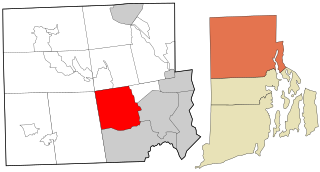
Johnston is a town in Providence County, Rhode Island, United States. The population was 28,769 at the 2010 census. Johnston is the site of the Clemence Irons House (1691), a stone-ender museum, and the only landfill in Rhode Island. Incorporated on March 6, 1759, Johnston was named for the colonial attorney general, Augustus Johnston.
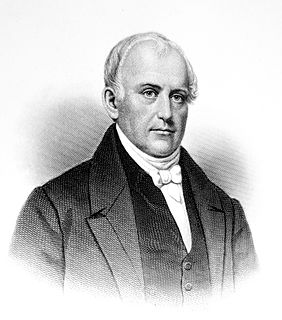
Samuel Slater was an early English-American industrialist known as the "Father of the American Industrial Revolution" and the "Father of the American Factory System". In the UK, he was called "Slater the Traitor" because he brought British textile technology to America, modifying it for United States use. He memorized the designs of textile factory machinery as an apprentice to a pioneer in the British industry before migrating to the United States at the age of 21. He designed the first textile mills in the US and later went into business for himself, developing a family business with his sons. A wealthy man, he eventually owned thirteen spinning mills and had developed tenant farms and company towns around his textile mills, such as Slatersville, Rhode Island.
Sion may be a transliteration of Zion or may refer to:

The smock mill is a type of windmill that consists of a sloping, horizontally weatherboarded or thatched tower, usually with six or eight sides. It is topped with a roof or cap that rotates to bring the sails into the wind. This type of windmill got its name from its resemblance to smocks worn by farmers in an earlier period.
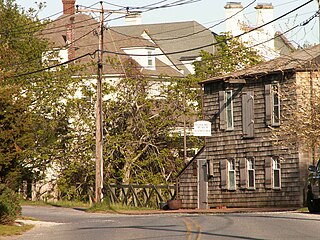
Water Mill is a hamlet and a census-designated place (CDP) within the Town of Southampton on Long Island in Suffolk County, New York, United States. The population of the CDP was 1,559 at the 2010 census. Its ZIP code is 11976.
The history of New England pertains to the New England region of North America in the United States. New England is the oldest clearly defined region of the United States, and it predates the American Revolution by more than 150 years. The English Pilgrims were Puritans fleeing religious persecution in England who established Plymouth Colony in 1620, the first colony in New England and second in America. A large influx of Puritans populated the greater region during the Puritan migration to New England (1620–1640), largely in the Boston and Salem area. Farming, fishing, and lumbering prospered, as did whaling and sea trading.

The history of Rhode Island is an overview of the Colony of Rhode Island and Providence Plantations and the state of Rhode Island from pre-colonial times to the present.

Henry Lippitt was the 33rd Governor of Rhode Island from 1875 to 1877.

Henry Howard was an American lawyer and politician. He served as the 32nd Governor of Rhode Island from 1873 to 1875.

William Croad Lovering was a U.S. Representative from Massachusetts.
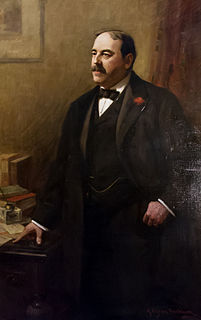
William Gregory was an American politician, the 46th Governor of Rhode Island.

James Youngs Smith was an American politician and the 29th Governor of Rhode Island.

Camp Albert L. Mills was a military installation on Long Island, New York. It was located about ten miles from the eastern boundary of New York City on the Hempstead Plains within what is now the village of Garden City. It was named in honor of Major General Albert L. Mills, who was awarded the Medal of Honor for gallantry during the Spanish–American War.

New England is a region composed of six states of the northeastern United States: Maine, Vermont, New Hampshire, Massachusetts, Rhode Island, and Connecticut. It is bordered by the state of New York to the west and by the Canadian provinces of New Brunswick and Quebec to the northeast and north, respectively. The Atlantic Ocean is to the east and southeast, and Long Island Sound is to the south. Boston is New England's largest city as well as the capital of Massachusetts. The largest metropolitan area is Greater Boston with nearly a third of the entire region's population, which also includes Worcester, Massachusetts, Manchester, New Hampshire, and Providence, Rhode Island.

Blackstone River Valley National Historical Park is a National Park Service unit in the states of Rhode Island and Massachusetts. The park was created for the purpose of preserving, protecting, and interpreting the industrial heritage of the Blackstone River Valley and the urban, rural, and agricultural landscape of that region. The Blackstone River Valley was the site of some of the earliest successful textile mills in the United States, and these mills contributed significantly to the earliest American Industrial Revolution. The subsequent construction of the Blackstone Canal, a few years after the successful completion of the Erie Canal, helped to sustain the region's industrial strength.

